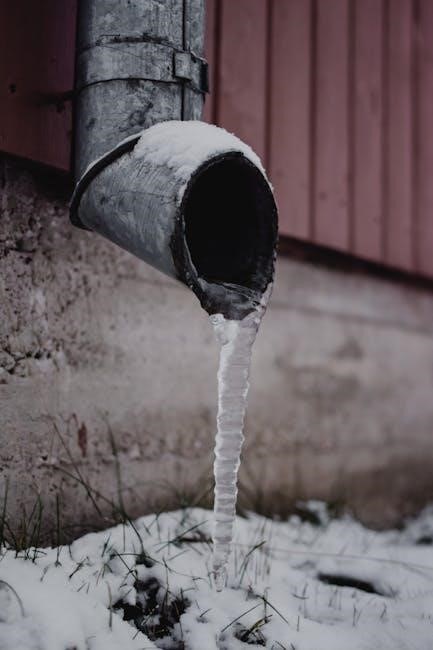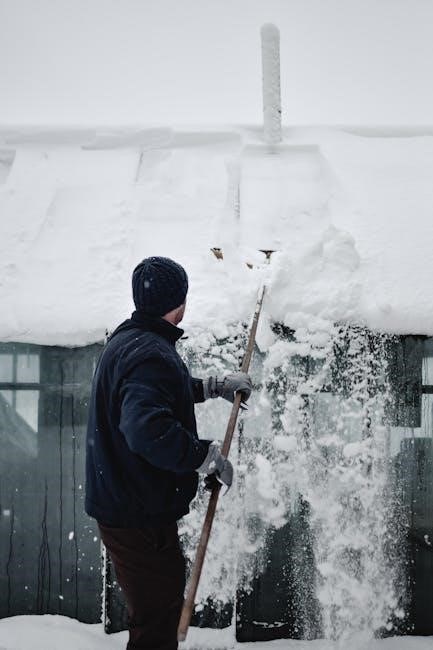smoke alarm compliance certificate qld pdf
The Smoke Alarm Compliance Certificate QLD PDF is a legal document ensuring smoke alarms meet safety standards in Queensland properties. It is essential for property sellers and landlords to comply with current legislation, avoiding penalties and ensuring tenant safety. The certificate verifies proper installation, maintenance, and functionality of smoke alarms, adhering to Building Regulation 2021 requirements. Non-compliance can result in significant fines and legal risks, making this certification crucial for all residential properties in Queensland.
Proactive investors and property owners must update their smoke alarms to meet new compliance legislation, as even one mistake can lead to costly consequences. This certificate serves as proof of adherence to fire safety laws, protecting lives and property while fulfilling legal obligations. It is a vital step in ensuring smoke alarms function correctly, providing early warnings in emergencies and safeguarding occupants.
What is a Smoke Alarm Compliance Certificate?
A Smoke Alarm Compliance Certificate is a legal document verifying that smoke alarms in a Queensland property meet required safety standards. It confirms that installations, maintenance, and functionality align with current legislation, ensuring fire safety compliance. This certificate is essential for property transactions, rental agreements, and fulfilling legal obligations. Issued by licensed professionals, it provides proof that smoke alarms are properly installed and operational, protecting occupants in case of emergencies. The certificate is often required by local councils, landlords, and property sellers to ensure adherence to fire safety regulations and avoid potential penalties.
Importance of Smoke Alarm Compliance in Queensland
Smoke alarm compliance is critical in Queensland to ensure fire safety and protect human life. Non-compliance can lead to severe penalties, legal action, and increased risks during emergencies. Properly functioning smoke alarms are essential for early detection of fires, reducing potential damage and loss of life. Compliance also safeguards property owners and landlords from legal liabilities, ensuring they meet their obligations under Queensland fire safety laws. With new legislation emphasizing stricter requirements, adhering to smoke alarm standards is vital for avoiding fines and maintaining a safe living environment for tenants and residents alike.

Legislative Framework for Smoke Alarms in Queensland
Queensland’s smoke alarm laws are governed by the Building Regulation 2021, Fire and Emergency Services Act 1990, and Queensland Fire and Rescue Service guidelines. These legislations establish strict requirements for smoke alarm installation, maintenance, and compliance, ensuring public safety and reducing fire risks. Property owners must adhere to these regulations to avoid penalties and legal consequences, with specific standards outlined for residential properties across the state.
Building Regulation 2021 and Smoke Alarm Requirements
The Building Regulation 2021 outlines specific requirements for smoke alarms in Queensland properties, ensuring compliance with safety standards. Property owners must install approved smoke alarms in designated locations, such as bedrooms, hallways, and living areas. The regulation mandates that smoke alarms meet Australian Standards AS 3786 and be interconnected for maximum effectiveness. Hardwired smoke alarms are required in new constructions or renovations, while battery-powered alarms are permitted in existing properties. Non-compliance with these requirements can result in penalties and legal action, emphasizing the importance of adhering to the regulation’s guidelines for fire safety.
Section 68, 69, and 70(1)(a) of the Building Regulation 2021 detail the obligations for smoke alarm installation and maintenance. These sections ensure that smoke alarms are functional and appropriately certified, protecting occupants from fire hazards. Property owners must verify that their smoke alarms meet these standards to avoid legal consequences and ensure compliance with Queensland’s fire safety laws. This regulation is a critical component of the state’s fire safety framework, aimed at reducing risks and saving lives through proper smoke alarm installation and maintenance practices.
Fire and Emergency Services Act 1990
The Fire and Emergency Services Act 1990 plays a crucial role in enforcing fire safety standards, including smoke alarm compliance, in Queensland. This legislation mandates the installation and maintenance of smoke alarms in residential properties to ensure public safety. Property owners are required to comply with specific standards outlined in the Act, which align with the Building Regulation 2021. Failure to meet these requirements can result in penalties, legal action, and increased risks to occupants. The Act emphasizes the importance of functional smoke alarms in preventing fire-related incidents and ensuring timely warnings for occupants.
Under this Act, the Queensland Fire and Rescue Service enforces compliance with smoke alarm standards, ensuring properties are equipped to handle fire emergencies effectively. Property owners must obtain a Smoke Alarm Compliance Certificate to verify adherence to the Act’s requirements. This certificate is essential for legal compliance and safeguarding lives. By adhering to the Fire and Emergency Services Act 1990, property owners contribute to a safer community and avoid potential legal consequences associated with non-compliance.
Queensland Fire and Rescue Service Guidelines
The Queensland Fire and Rescue Service (QFRS) provides detailed guidelines to ensure smoke alarms meet safety standards and legislative requirements. These guidelines emphasize proper installation, maintenance, and testing of smoke alarms in residential properties. They align with the Building Regulation 2021 and the Fire and Emergency Services Act 1990, ensuring compliance with fire safety laws. Property owners must adhere to these guidelines to obtain a Smoke Alarm Compliance Certificate, which verifies that smoke alarms are functioning correctly and meet all necessary safety standards.
The QFRS guidelines also outline the roles of certified professionals in inspecting and certifying smoke alarms. These professionals ensure that smoke alarms are installed in correct locations, are free from defects, and operate as intended. By following these guidelines, property owners can reduce fire risks, protect occupants, and avoid legal penalties associated with non-compliance. The guidelines are regularly updated to reflect current fire safety best practices and legislative changes.

Key Requirements for Smoke Alarms in QLD
The key requirements for smoke alarms in QLD include proper installation, approved types, correct locations, and regular maintenance to ensure compliance with safety standards and legislation.
Types of Smoke Alarms Approved in Queensland
In Queensland, approved smoke alarms include photoelectric and ionization types, each suitable for different environments. Photoelectric alarms are recommended for reducing false alarms caused by cooking or steam. Ionization alarms are effective in detecting fast-flaming fires. Both types must comply with Australian Standard AS 3786. Hardwired smoke alarms with a battery backup are strongly recommended for new properties, while existing homes can use battery-powered alarms meeting safety standards. All smoke alarms must be certified by a recognized testing authority to ensure reliability and compliance with fire safety regulations. Proper installation and maintenance are also critical for optimal performance.
Installation Standards for Smoke Alarms

Smoke alarms in Queensland must be installed according to strict standards to ensure maximum safety and compliance. Alarms should be placed on every level of a home, in hallways outside bedrooms, and within 3 meters of bedroom doors. They must not be installed within 0.3 meters of a corner, 1.5 meters of an air conditioning vent, or 3 meters of a kitchen or bathroom. Hardwired smoke alarms with a battery backup are mandatory for new properties, while existing homes can use battery-powered alarms if they meet current standards. Proper installation ensures early fire detection, saving lives and property. Compliance with these standards is essential for certification.
Locations for Smoke Alarms in Residential Properties
Smoke alarms must be installed in specific locations to ensure optimal fire detection and compliance with Queensland regulations. They should be placed on every level of the home, in hallways outside bedrooms, and within 3 meters of each bedroom door. Alarms are also required in living areas and garages. However, they should not be installed within 0.3 meters of a corner, 1.5 meters of an air conditioning vent, or 3 meters of a kitchen or bathroom. Proper placement ensures early detection of fires, reducing risks to occupants. Compliance with these location standards is critical for certification and safety.
For new properties, smoke alarms must be hardwired and interconnected, while existing homes can use battery-powered alarms if they meet current standards. Ensuring alarms are in the correct locations is vital for effective fire safety and legal compliance in Queensland.
Maintenance and Testing Requirements
Regular maintenance and testing of smoke alarms are crucial for ensuring their effectiveness and compliance with Queensland regulations. Homeowners and landlords must test smoke alarms monthly by pressing the test button and replacing batteries annually. Additionally, alarms should be cleaned every six months to remove dust and debris. Professional inspections are required at least once a year to verify functionality and compliance with safety standards. Failure to maintain smoke alarms can lead to non-compliance, legal risks, and potential insurance issues. Proper upkeep ensures early fire detection, protecting lives and property while meeting legislative requirements.
Maintaining smoke alarms is not only a legal obligation but also a critical safety measure. Regular testing and maintenance help ensure alarms function correctly during emergencies, providing vital early warnings to occupants.
Obtaining a Smoke Alarm Compliance Certificate in QLD
Obtaining a Smoke Alarm Compliance Certificate in QLD requires a professional inspection ensuring all alarms meet safety standards, crucial for legal compliance and tenant safety.
Who Can Issue a Compliance Certificate?
In Queensland, a Smoke Alarm Compliance Certificate can only be issued by authorized individuals, such as licensed electricians or fire safety inspectors. These professionals must ensure smoke alarms meet current safety standards and regulations. Property owners or landlords cannot self-certify; the process requires an independent, qualified expert to verify compliance. The certifier must inspect all smoke alarms, check their functionality, and confirm their correct installation locations. Non-compliance can result in penalties, making it essential to use a certified professional. This ensures the safety of occupants and adherence to QLD fire safety laws.
Steps to Obtain a Smoke Alarm Compliance Certificate
To obtain a Smoke Alarm Compliance Certificate in Queensland, property owners must first contact a licensed professional, such as an electrician or fire safety inspector. Schedule an inspection to ensure all smoke alarms meet current standards. The inspector will check alarm types, locations, and functionality. Once compliance is confirmed, the certifier will complete the QLD Smoke Alarm Compliance Certificate form, detailing the property address, alarm details, and inspection results. The certificate must be signed by both the property owner and the inspector. Keep a copy for your records and provide it when required, such as during property sales or rental agreements.
Required Documentation for Certification
To obtain a Smoke Alarm Compliance Certificate in Queensland, specific documentation must be provided. This includes proof of smoke alarm installation, such as receipts or invoices from licensed installers. Inspection reports detailing the type, location, and functionality of alarms are also required. Additionally, manufacturers’ certifications for the smoke alarms must be submitted to verify compliance with Australian Standards. All documents must align with Queensland’s fire safety regulations. These records are reviewed during the certification process to ensure all requirements are met before issuing the compliance certificate.
Costs Associated with Smoke Alarm Certification
The cost of obtaining a Smoke Alarm Compliance Certificate in Queensland varies depending on factors such as the number of alarms, installation requirements, and inspection fees. On average, certification costs range between $50 to $150, covering inspection and documentation fees. Additional charges may apply for repairs or upgrades to meet compliance standards. Licensed professionals, such as electricians or fire safety inspectors, typically charge per service, and prices may vary depending on location and provider. It is essential to contact a certified professional to get an accurate quote for your property’s specific needs.

Consequences of Non-Compliance with Smoke Alarm Laws
Non-compliance with smoke alarm laws in Queensland can result in significant penalties, legal action, and increased risks during insurance claims, emphasizing the importance of adherence.
Penalties for Non-Compliance in Queensland
In Queensland, failing to comply with smoke alarm laws can result in significant penalties. Property owners or landlords may face fines of up to $27,000 for non-compliance, while corporations could incur penalties of up to $135,000. These fines are enforced under the Fire and Emergency Services Act 1990 and the Building Regulation 2021. Non-compliance can also lead to legal action, particularly if a fire occurs and the property is found to be non-compliant. These penalties underscore the importance of adhering to smoke alarm regulations to ensure safety and avoid financial or legal repercussions.
Legal Risks for Property Owners and Landlords
Property owners and landlords in Queensland face significant legal risks if they fail to comply with smoke alarm regulations. Non-compliance can lead to legal action, particularly if a fire results in injury or property damage. Courts may hold owners liable for negligence if smoke alarms are not properly installed or maintained. Additionally, breaches of tenancy agreements or duty of care can result in lawsuits. Legal risks also extend to insurance claims being denied if non-compliance is discovered. Ensuring compliance is critical to avoiding costly legal battles and protecting against financial and reputational damage.
Impact on Insurance Claims
Non-compliance with smoke alarm regulations in Queensland can significantly impact insurance claims. Insurers may deny claims if a property lacks properly installed and maintained smoke alarms, as required by law. This is particularly true in cases of fire-related damage or loss. Insurance companies often require proof of compliance, such as a Smoke Alarm Compliance Certificate, to validate claims. Without it, property owners may face financial losses and legal challenges. Ensuring compliance is essential to safeguarding insurance coverage and avoiding disputes. Always verify with your insurer to understand their specific requirements and avoid potential complications.

Smoke Alarm Compliance for Property Sellers and Landlords
Property sellers and landlords in Queensland must ensure smoke alarms comply with legal standards to avoid penalties and ensure tenant safety. Compliance is mandatory.
Obligations for Property Sellers in QLD
Property sellers in Queensland must ensure smoke alarms comply with current legislation before settlement. Sellers are legally required to install working smoke alarms that meet the Building Regulation 2021 standards. A Smoke Alarm Compliance Certificate, issued by a licensed professional, must be provided to the buyer before settlement. Failure to comply can result in penalties, including fines. Sellers must also ensure all smoke alarms are functional and correctly installed. This obligation ensures buyer safety and avoids legal repercussions. Non-compliance can delay settlement or lead to contract termination. Sellers must prioritize compliance to meet regulatory requirements and protect themselves legally.
Responsibilities for Landlords
Landlords in Queensland must ensure rental properties comply with smoke alarm legislation. They are responsible for installing smoke alarms that meet current standards and conducting regular maintenance. Landlords must test smoke alarms every 12 months and replace batteries or devices as needed. They must also keep records of inspections and maintenance. Compliance with the Building Regulation 2021 is mandatory. Failure to comply can result in penalties. Landlords must provide a Smoke Alarm Compliance Certificate during property transfers or as required by authorities. Ensuring smoke alarm compliance protects tenants and avoids legal consequences for landlords. Regular inspections are essential to maintain safety standards.
Consequences of Non-Compliance for Tenanted Properties
Non-compliance with smoke alarm laws in Queensland can lead to serious consequences for landlords and property managers. Failing to meet requirements may result in fines, with penalties ranging up to $27,750 for severe violations. Tenants may also withhold rent if smoke alarms are not properly maintained. In case of a fire, non-compliance can lead to criminal charges if negligence is proven. Additionally, insurance claims may be denied if smoke alarms are not certified. Landlords face legal and financial risks, emphasizing the importance of adhering to smoke alarm regulations to protect tenants, avoid penalties, and maintain property integrity.

How to Download and Fill the Smoke Alarm Compliance Certificate QLD PDF
Access the QLD Government website to download the Smoke Alarm Compliance Certificate PDF. Fill in property details, smoke alarm information, and certification statements accurately. Ensure all fields are complete and correct before submission to avoid delays or rejections. Verify the document meets regulatory standards to guarantee compliance and legal validity.
Steps to Access the QLD Smoke Alarm Compliance Form
To access the QLD Smoke Alarm Compliance Certificate form, visit the official Queensland Government website. Navigate to the fire safety or building compliance section. Search for “Smoke Alarm Compliance Certificate” in the search bar. Download the PDF form directly from the website. Ensure you use the most recent version, as outdated forms may not be accepted. Once downloaded, review the form to understand the required fields and documentation. This streamlined process ensures you can complete the certification efficiently and in compliance with QLD regulations.
Understanding the Fields in the Compliance Certificate
The QLD Smoke Alarm Compliance Certificate includes specific fields that must be accurately completed. These fields typically cover property details, smoke alarm specifications, installation dates, locations, and compliance status. Additional sections may require certifier information, including the installer’s license number and signature. Each field is designed to ensure transparency and accountability, verifying that smoke alarms meet QLD safety standards; Properly filling out these fields is crucial for legal compliance and avoiding potential penalties. Always refer to the latest QLD guidelines to ensure accuracy when completing the form.
Submitting the Completed Certificate
Once the QLD Smoke Alarm Compliance Certificate is completed, it must be submitted to the relevant authorities or stakeholders. Property owners or landlords should ensure the certificate is provided to local councils, fire services, or tenancy managers as required. The document serves as proof of compliance with QLD smoke alarm laws. Retaining a copy for personal records is also recommended. Submission may be done electronically or in hard copy, depending on the recipient’s requirements. Timely submission ensures avoidance of legal issues and confirms adherence to safety regulations.

Common Mistakes to Avoid When Completing the Certificate
Common mistakes include incomplete fields, incorrect dates, missing signatures, and wrong alarm types. Ensure all details are accurate and comply with QLD regulations.
Incorrect Information or Omissions
Incorrect information or omissions are common errors that can invalidate a Smoke Alarm Compliance Certificate in QLD. Property owners must ensure all details, such as alarm types, locations, and test dates, are accurate. Missing or incorrect property addresses, installer details, or certification dates can lead to rejection. Omissions in required fields, like the number of alarms or their compliance status, are also problematic. Double-checking all entries before submission is crucial to avoid delays or penalties. Ensure the certificate aligns with QLD regulations and standards to maintain compliance and avoid legal issues.
Failure to Meet Inspection Standards
Failure to meet inspection standards is a critical issue when completing a Smoke Alarm Compliance Certificate in QLD. Smoke alarms must comply with AS 3786-2014 or AS 3786-2021 standards. If alarms are not installed correctly, fail performance tests, or are outdated, the certificate may be rejected. Property owners must ensure all alarms are functional, properly located, and meet QLD regulations. Non-compliance can result in penalties or legal action. Regular inspections by licensed professionals are essential to avoid such issues and ensure the safety of occupants. Always verify that installations meet current standards before submitting the certificate.
Non-Compliance with Signature Requirements
Non-compliance with signature requirements is a common oversight when completing the Smoke Alarm Compliance Certificate QLD PDF. The certificate must be signed by the installer or certifier, confirming that smoke alarms meet QLD standards. Missing or invalid signatures render the document invalid. Ensure the signature includes the signer’s name, license number, and date. Property owners or agents must verify that all fields are completed correctly. Failure to adhere to signature requirements can delay property sales or rentals and may result in penalties. Always double-check the signature section before submission to avoid compliance issues.
Ensuring smoke alarm compliance is crucial for safety and legal adherence in QLD. Non-compliance risks lives and penalties. Always follow regulations and maintain proper documentation.
Smoke alarm compliance is essential for ensuring the safety of occupants and fulfilling legal obligations in Queensland. It helps prevent fire-related deaths and injuries by providing early warnings. Compliance also protects property from potential damage and ensures insurance validity. Property sellers and landlords must adhere to regulations to avoid penalties and legal issues. Regular maintenance and certification are critical to guarantee smoke alarms function correctly. Compliance not only saves lives but also upholds community safety standards, making it a shared responsibility for all property owners.

Final Tips for Ensuring compliance
Final Tips for Ensuring Compliance
To ensure smoke alarm compliance, regularly inspect and test alarms to confirm functionality. Replace batteries annually and upgrade to hardwired or lithium-powered alarms for reliability. Use Queensland-approved devices and install them in mandated locations. Keep detailed records of maintenance, testing, and certification. Hire licensed professionals for installations to avoid errors. Stay updated on legislative changes and adapt accordingly. Educate tenants or buyers about responsibilities and ensure compliance before property transfers. Prioritize safety and legal adherence to prevent penalties and risks.

References and Further Reading
- Visit the Queensland Government website for detailed smoke alarm laws and compliance guides.
- Refer to the Fire and Emergency Services Act 1990 for legal requirements.
- Consult the Queensland Fire and Rescue Service guidelines for installation standards.
- Download the QLD Smoke Alarm Compliance Certificate PDF from official sources.
Queensland Government Resources
The Queensland Government provides essential resources for smoke alarm compliance. Visit the official Queensland Government website for detailed guides, downloadable forms, and legal requirements. The Department of Housing and Public Works offers specific guidelines for landlords and property sellers. Additionally, the Queensland Fire and Emergency Services website provides technical specifications and safety standards; These resources ensure compliance with the latest regulations and help property owners understand their obligations. Access the official Smoke Alarm Compliance Certificate QLD PDF and related documents through these trusted government portals for accurate and up-to-date information.
Fire Safety and Compliance Websites
Reputable websites like the Australian Fire Safety Directory and the Fire Protection Association Australia provide detailed fire safety guidelines. These platforms offer resources on smoke alarm compliance, installation standards, and testing procedures. Additionally, the Australian Building Codes Board publishes national fire codes that align with Queensland’s requirements. Visit these websites for comprehensive guides, checklists, and compliance tools. They are essential for property owners, landlords, and certifiers to ensure smoke alarms meet legal and safety standards in Queensland.










